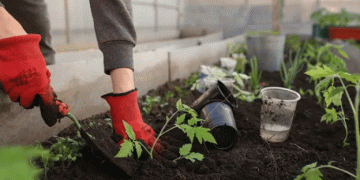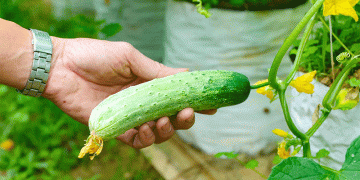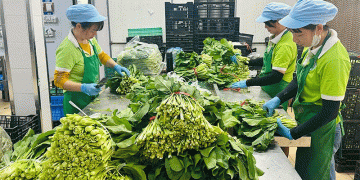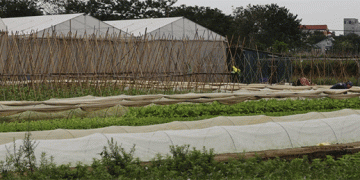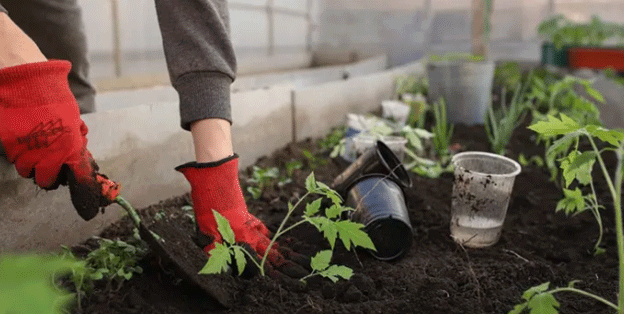Vegetable growing in the Czech Republic has a rich history, especially in regions such as Bzenec and its surroundings. How has vegetable growing developed over time and what is its current state?
The year 2022 was marked by serious problems for the Czech vegetable growing industry. The growing season was impacted by several critical factors, including the lingering effects of the COVID-19 pandemic, the conflict in Ukraine, the energy crisis, inflation and their impact on rising agricultural costs, consumer purchasing power and the agricultural market. inside and outside the EU. Rising labor costs and concerns about the availability of seasonal workers have led some vegetable growers to consider exiting the sector or reducing their production.
Changing trends in vegetable production
Some enterprises have reduced the production of vegetables for direct consumption and focused on growing vegetables for processing. In the fall, many producers were deciding whether to stock up or switch to self-collection and direct sales without storage. Large manufacturers with extensive, modern warehousing facilities ensure inventory is maintained as planned. Weather-wise, 2022 was a relatively favorable year for vegetables, despite a slight delay in vegetative development due to the cooler spring months. Locally, vegetable crops were impacted by cooler, drier temperatures followed by high summer temperatures with thunderstorms and occasional hail.
Reduction in acreage and yield
The area under vegetable cultivation (including household sector estimates) decreased by 5.5% in 2022 to 15,124 hectares. The area of almost all controlled types of vegetables has decreased, with the exception of celery, radishes, pickled cucumbers and leeks. The vegetable harvest reached 303 thousand tons, which is 9.1% less than in the previous year. The reduction in cultivated areas significantly affected the production of onions, carrots, lettuce, kohlrabi, cauliflower and cabbage.
Continued problems in 2023
The consequences of the energy crisis and conflict in Ukraine continued to affect agriculture, including the vegetable sector, in 2023. Uncertainty about future energy prices needed for irrigation, storage and roof space, as well as fuel costs and prices and availability. Inputs such as fertilizers, crop protection products and mulch films were a major concern. These problems were compounded by rising labor costs and shortages of skilled labor and seasonal workers.
Vegetable growing in the Czech Republic entered 2023 with significant uncertainty. Growers have faced rising energy and irrigation costs, labor issues, and increased costs for fertilizers and crop protection products. In addition, several processing plants have shut down or reduced operations due to rising energy costs required for the processing industry (freezing and canning). This resulted in a loss of buyers for vegetables grown for processing, such as peas, sweet corn and spinach, prompting many small producers to reduce or diversify their vegetable production.
Weather conditions and their influence
In terms of weather, 2023 was generally favorable for vegetables, with significant regional differences. Although there were periods that complicated the development of vegetable growing, there were no nationwide extreme events with critical consequences. However, the yield and quality of some vegetables have decreased.
Winter months without prolonged and severe frosts allowed the crops to overwinter well without being damaged by pests. Favorable conditions for spring work appeared in early February, but March and April brought low temperatures and heavy rainfall throughout the country. This weather complicated spring work, especially the quality of soil preparation, and delayed the early sowing and planting dates. Later, cool weather slowed the growth and development of established crops. High rodent populations were reported in several regions during the spring.
In June, cool and wet weather abruptly gave way to high temperatures and drought, stressing vegetable plants, stunting development and increasing pest pressure. Onion crops were damaged by thrips, then by viral, fungal and mildew diseases. Crops are often damaged by heat (drying and yellowing of leaf tips), and early harvested onions suffer from field drying. Brassica vegetables also struggled with the heat. Local thunderstorms with hail damaged vegetable crops in some areas. The hot and dry period gave way to heavy rains in late July and early August, making harvesting and field work more difficult and jeopardizing the quality of harvested vegetables. Strong storms at the end of August damaged vegetable crops, especially in southern Moravia, and the greenhouses of the Rajecek farm in Brno were also damaged.
Favorable autumn weather or summer varieties. However, high-pressure systems bringing warm air from the south caused above-average temperatures accompanied by a lack of precipitation across the Czech Republic, complicating autumn fieldwork, harvest, and storage.
The vegetable farming sector in the Czech Republic faces numerous challenges, from rising costs and labor shortages to fluctuating weather conditions and geopolitical impacts. Despite these hurdles, advances in farming practices and favorable weather periods can still lead to successful harvests. Continued adaptation and innovation will be critical for the future sustainability of vegetable farming in the region.
